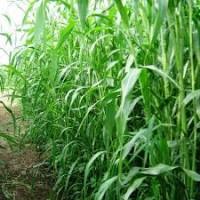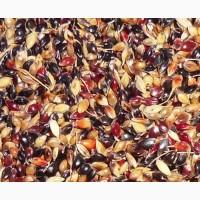Sell / buy
Sudanka Bilyavka, Dnipropetrovsk region.
Region:all Ukraine,
Dnipropetrovsk region.
(Pyatihatky)
Seeds 2023. Sudan grass is one of the most valuable annual fodder crops. It has high drought tolerance, good fodder qualities, and is able to grow back quickly after mowing. In favorable conditions, it gives 3 — 4 slopes. The plant grows up to 170-220 cm, when harvested for grain - 200-210 cm, the bushiness and branching of the shoots is high,
This is a heat-loving plant. Seeds begin to germinate at a temperature of +8...+10°С. Frosts at -3...-4°С completely destroy seedlings and adult plants. At an average daily temperature of 12-13°С, Sudanese grass almost does not grow. Vegetation period: 95-110 days
Sudan grass belongs to late sowing cultures,
The best precursors for sudanka are winter, grain legumes, and fallow crops (corn, sugar beet, etc.)(//tractor-service.com)
Sowing of sudanka begins in the period of the onset of stable warm weather, when the soil temperature at a depth of 10 cm reaches 10-12 °C. It gives high yields of green mass when sown during May and June, if the area was maintained as pure steam. If it is sown too early, the seedlings of the Sudanese can be damaged by frosts, and the crops will be very smothered by weeds, since it grows very slowly at low temperatures.
When growing for green fodder and grazing, sudanuk is sown in a continuous row method, preferably with a narrow row spacing. Sowing is carried out at a soil temperature of 10-12°С at a depth of 10 cm. For fodder purposes, Sudanese grass is sown in a continuous row method, for seeds - in wide rows with a row spacing of 45-60 cm. The depth of sowing seeds is 3-5 cm, on dry and light soils - up to 5-8 cm. sow in a mixture with field crops, peas or lupins. At the same time, the sowing rate isseeds of Sudanese grass and the components are reduced by 15-20% compared to the sowing rate in its pure form.
Harvesting of sudanka for hay and green fodder begins at the beginning of flowering. The first cut occurs 45-50 days after germination, gives 2-3 cuts, matures into seeds in 95-110 days. The seeds of the variety have the highest field germination among other varieties, drought-resistant, multi-rowed. Later, the stalks become rough, the quality of the fodder decreases, and cattle eat it worse. At early harvesting times, the grass grows better, as a result of which the total yield of green mass from all slopes does not decrease.
For seeds, Sudan grass is harvested when the seeds ripen in the panicles of the main stems.
This is a heat-loving plant. Seeds begin to germinate at a temperature of +8...+10°С. Frosts at -3...-4°С completely destroy seedlings and adult plants. At an average daily temperature of 12-13°С, Sudanese grass almost does not grow. Vegetation period: 95-110 days
Sudan grass belongs to late sowing cultures,
The best precursors for sudanka are winter, grain legumes, and fallow crops (corn, sugar beet, etc.)(//tractor-service.com)
Sowing of sudanka begins in the period of the onset of stable warm weather, when the soil temperature at a depth of 10 cm reaches 10-12 °C. It gives high yields of green mass when sown during May and June, if the area was maintained as pure steam. If it is sown too early, the seedlings of the Sudanese can be damaged by frosts, and the crops will be very smothered by weeds, since it grows very slowly at low temperatures.
When growing for green fodder and grazing, sudanuk is sown in a continuous row method, preferably with a narrow row spacing. Sowing is carried out at a soil temperature of 10-12°С at a depth of 10 cm. For fodder purposes, Sudanese grass is sown in a continuous row method, for seeds - in wide rows with a row spacing of 45-60 cm. The depth of sowing seeds is 3-5 cm, on dry and light soils - up to 5-8 cm. sow in a mixture with field crops, peas or lupins. At the same time, the sowing rate isseeds of Sudanese grass and the components are reduced by 15-20% compared to the sowing rate in its pure form.
Harvesting of sudanka for hay and green fodder begins at the beginning of flowering. The first cut occurs 45-50 days after germination, gives 2-3 cuts, matures into seeds in 95-110 days. The seeds of the variety have the highest field germination among other varieties, drought-resistant, multi-rowed. Later, the stalks become rough, the quality of the fodder decreases, and cattle eat it worse. At early harvesting times, the grass grows better, as a result of which the total yield of green mass from all slopes does not decrease.
For seeds, Sudan grass is harvested when the seeds ripen in the panicles of the main stems.
Ad ID: #830538
(added by a registered user)
Permanent Ad Address:
Impressions / views for today: ?, total: ?
Similar recent ads
Among them there are many interesting ones...
Filters: Seeds of Sudanese grass








